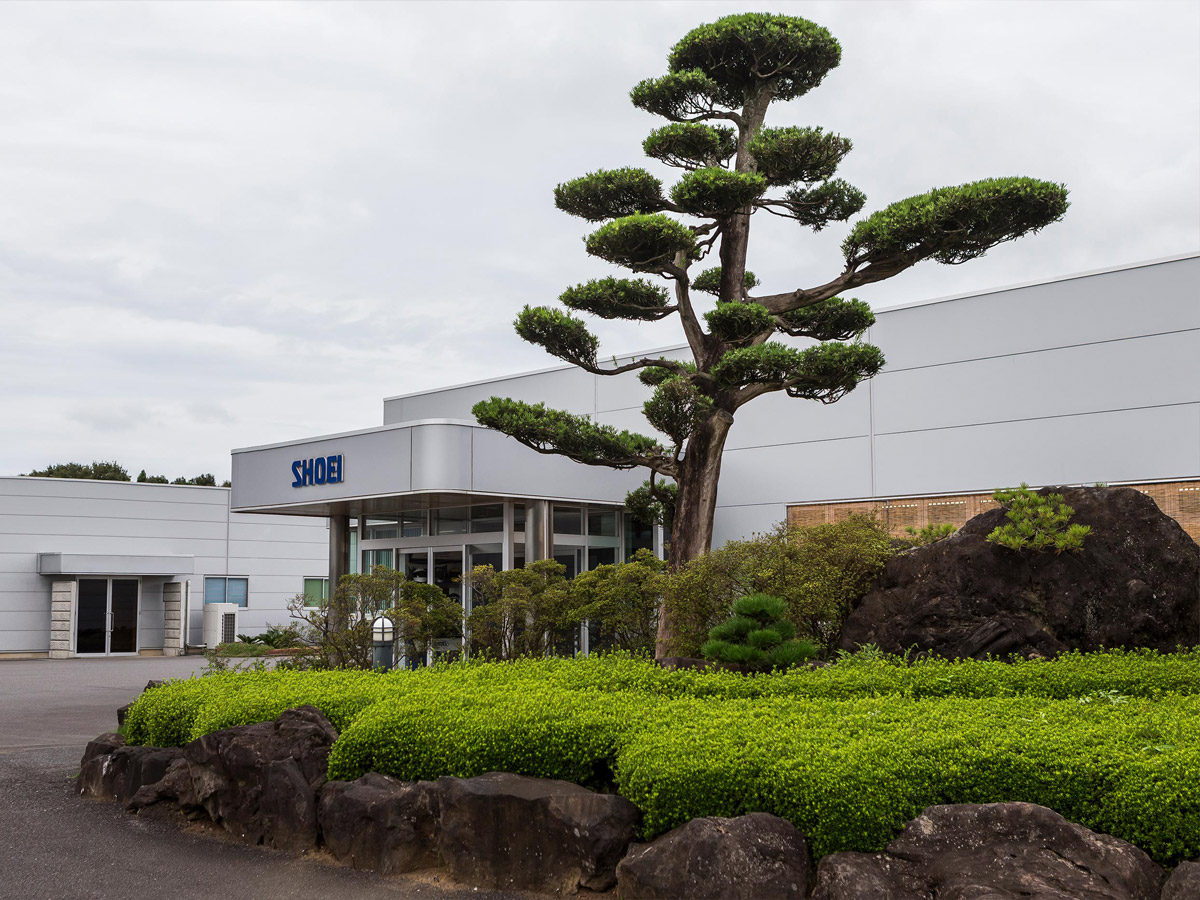History of Shoei helmets
Published on: 22 August 2024

The doors first opened at Shoei in 1959, although initially the company produced multi-purpose safety helmets. Their first motorcycle helmet was produced in 1960; just three years later they produced their first helmet for racing, although this was still an open-face helmet.
It was not until 1967 that the first full-face Shoei helmet was manufactured. Shoei called it the SR-Z. Nearly a decade later, they produced their first carbon fibre hamlet, called the GR-Z.
In those early days, the visors on motorcycle helmets did not fit flush against a helmet's shell. They sat on top of the shell. Shoei put this right in 1990, with the very first helmet with a flush-fit visor mechanism.
In 2011, Shoei was the first motorcycle helmet company to install a wind tunnel into their own factory. This was in the company's Ibaraki factory. This wind tunnel is used by Shoei at every stage of production, from the clay model to the final production helmet. And it is used to ensure that ventilation is maximised, whilst keeping wind noise to a minimum.
Many helmet manufacturers farm their production out to factories in places like China, Vietnam and India, but even today Shoei makes all its helmets in its own factories in Japan. It is this, and it will always be this, that controls the ultimate supply of Shoei helmets. Shoei will never become an inexpensive, mass-market brand. Their helmets never can be, and they don't ever want them to be.
All Shoei's helmets are made totally by hand by the company's directly employed, skilled and time-served staff. Every single shell is checked for correct thickness and weight. Helmets are batch tested, and if one helmet within a batch is found to be deficient in any way, the entire batch is destroyed. Indeed, in a year 4,000 helmets are destroyed as part of this programme. Before a shell gets turned into a helmet, it gets signed by the employee who was responsible for its production; rather like an Aston Martin engine.
The shell of a Shoei helmet uses a construction known as AIM, which stands for Advanced Integrated Matrix. The shell comprises five different layers of fibreglass interwoven with organic fibres and resin. The result is a shell that is incredibly strong, but also lightweight and elastic.
A helmet's shell provides the first protective barrier in an accident. It needs to have some elasticity to absorb some of the energy of an impact, but its primary role is to dissipate that energy across the shell, to ensure that it is not all directed at the point of impact.
But it is the EPS liner, basically made from an expanded polystyrene, that is charged with absorbing the larger part of the impact, in order again to ensure that the energy is reduced by the time it reaches the skull. The EPS liners in a Shoei helmet are dual layered and multi-density. Typically, the EPS will be high density at the crown, and medium density in areas such as the forehead. The secondary layer will typically be of a lower density.
Share this story

































































